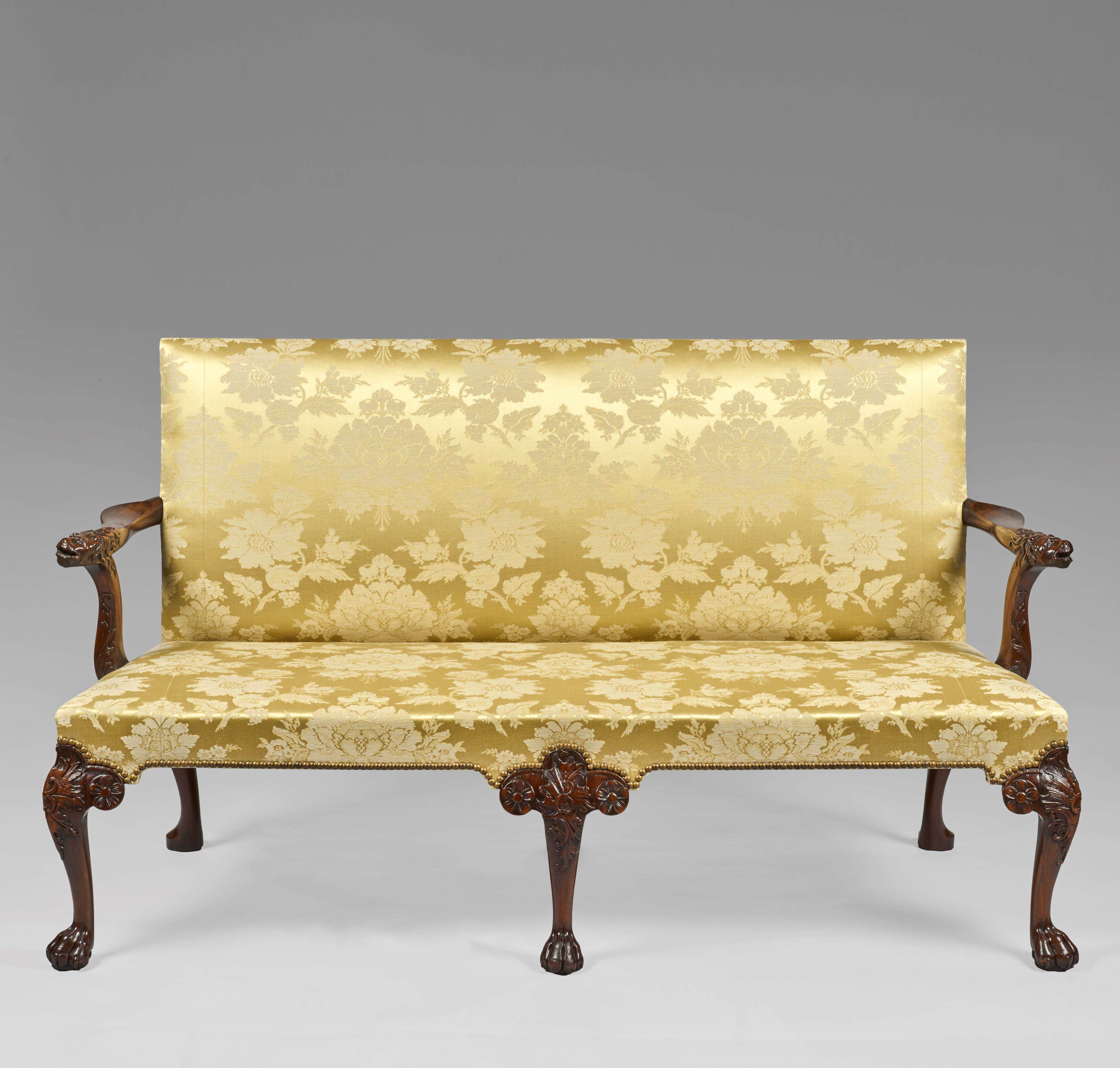This spectacular pair of commodes were likely to have been planned as a superb embellishment to a classical Drawing Room or reception room in a 1770s English town or country house. The elements of the decoration are derived from classical motifs, many of which were reproduced in engraved printed form and published in England in the second half of the 18th century. The large rectangular panel - or tablet - in the centre and sides of each commode is inlaid with a flowered lozenge trellis pattern, the design of which is drawn from the apse of the Temple of Venus and Roma, the largest temple in Ancient Rome. Furthermore, the tops are inlaid with a parquetry lattice pattern with a classical urn in the centre. The forward edge of the top is encased in a gilt metal moulding with gadrooning.
The maker of the commodes is not yet known, but we offer an attribution to the cabinet-making partnership of Ince and Mayhew, rivals and contemporaries of Thomas Chippendale, John and William Linnell and John Cobb all of whom made furniture in London in the second half of the 18th century at the highest quality level.
In the absence of documentation for this pair of commodes, comparisons can be drawn between the present pair and a small group of commodes about which more is known. Three specific areas on the present commodes share similarities with other commodes also attributed to the Ince and Mayhew partnership: marquetry, metalwork and design. In the case of the marquetry inlay, at least five single commodes, and a pair of commodes - each with convincing attributions to Ince and Mayhew - share the same generalised neo-classical urn raised on a pedestal and side opening doors, only two in the group below are fitted with ormolu mounts, but all share the side-opening doors. These are described as 'marked characteristics of the firm's work' (Roberts and Cator 2022, p. 257). The cabinets in the group are as follows:
1. a commode sold Christie's London, 9 June 2005, lot 250, formerly at Swallowfield Park;
2. a commode sold by R D Shafto, Esq., Christie's, London, 29 November 1979, lot 65;
3. a commode at the Victoria and Albert Museum (W.10-1917);
4. a commode at the Lady Lever Art Gallery, Port Sunlight, Liverpool (LL 4246);
5. another commode at the Lady Lever Art Gallery (LL 4424); and
6. a pair of commodes at Broadlands, Hampshire, made circa 1780 for Lord Palmerston, probably for his house in Park Street, London, and almost certainly supplied by Ince and Mayhew (viz. Roberts and Cator 2022, pp. 136-137, notes. 5 & 25)).
The attributions for commodes 1-5 above are carefully discussed by Roberts and Cator in their 2022 monograph, and by Wood in her 1994 catalogue: in each case attributions to the firm are based, not only on stylistic and constructional elements associated with firm, but depend on documented ownership history reaching, in some cases, into the eighteenth century.
In the present state of knowledge, there is no documented early history of this pair of commodes and thus, notwithstanding the clear parallels with commodes 1-6 listed here, only a tentative attribution to the firm can be allowed.
Literature for the group:
H. Roberts and C. Cator Industry and Ingenuity: The Partnership of William Ince and John Mayhew, London 2022, pp. 136-137, 250-251, 257-259, figs. 159-160, 165-171
L. Wood, Catalogue of Commodes, London, 1994, nos. 24 & 25, pp. 210-221
A pair of George III ormolu-mounted rosewood, sycamore, holly, mahogany and marquetry serpentine commodes
Attributed to the partnership of William Ince and John Mayhew
Circa 1775
.svg)

.svg)












.jpg)



